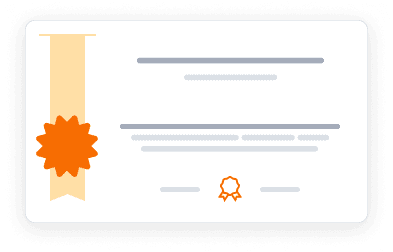This course is part of Navigating Disruption: Generative AI in the Workplace.
This foundational course examines generative artificial intelligence through a historical lens, comparing it to past revolutionary technologies like the printing press, telegraph, and early computers. You'll gain insights into how these previous disruptions can inform our understanding of AI's current impact. The course provides a clear explanation of how generative AI works, including large language models and image generation capabilities. You'll learn to differentiate between various types of AI and understand their operational mechanisms. A significant portion focuses on practical skills, particularly prompt engineering techniques to optimize your interactions with AI tools. The course also addresses AI's inherent limitations, examining how these systems learn and generate outputs, and evaluating their capabilities against specific goals. As the first course in the "Navigating Disruption" specialization, it establishes essential knowledge for adapting to AI advances in professional settings.
Instructors:
English
What you'll learn
Understand how generative AI compares to historical technological disruptions
Explain the basic mechanisms behind large language models and AI image generation
Identify key capabilities and inherent limitations of current generative AI tools
Develop effective prompt engineering techniques to improve AI interactions
Evaluate AI outputs using structured assessment frameworks
Recognize the appropriate use cases for generative AI in professional settings
Skills you'll gain
This course includes:
1.4 Hours PreRecorded video
1 assignment
Access on Mobile, Tablet, Desktop
Subscription access
Shareable certificate
Get a Completion Certificate
Share your certificate with prospective employers and your professional network on LinkedIn.
Created by
Provided by

Top companies offer this course to their employees
Top companies provide this course to enhance their employees' skills, ensuring they excel in handling complex projects and drive organizational success.





There are 3 modules in this course
This course provides a fundamental understanding of generative AI and its disruptive potential in modern society. The curriculum is structured into three comprehensive modules. The first module establishes a historical context by comparing generative AI to previous revolutionary communication technologies, helping students understand patterns of technological disruption. The second module explores the capabilities and mechanisms of AI systems, differentiating between various AI types with special focus on large language models and image generation. This section also introduces practical prompt engineering techniques to optimize interactions with AI tools. The final module addresses the limitations of AI by examining how these systems learn and generate outputs, evaluating their effectiveness against specific goals, and introducing frameworks for assessing AI-generated content. Throughout the course, students engage with interactive activities, discussions, and practical exercises designed to build both theoretical knowledge and applied skills in working with generative AI technology.
Getting Started
Module 1 · 1 Hours to complete
Affordances of AI
Module 2 · 2 Hours to complete
Limitations of AI
Module 3 · 1 Hours to complete
Fee Structure
Individual course purchase is not available - to enroll in this course with a certificate, you need to purchase the complete Professional Certificate Course. For enrollment and detailed fee structure, visit the following: Navigating Disruption: Generative AI in the Workplace
Instructor

4 Courses
Leading Scholar in Political Communication and Public Opinion Research
Josh Pasek serves as Associate Professor of Communication & Media and Political Science at the University of Michigan, where he has established himself as an expert in political communication, public opinion, and survey methodology. His research focuses on how new media and psychological processes shape political attitudes and behaviors, as well as improving techniques for measuring public opinion. As a Faculty Associate in the Center for Political Studies and Core Faculty for the Michigan Institute for Data Science, he explores topics such as the impact of political information on public opinion, the changing political information environment due to social media, and methodological issues in survey research. His work has been published in top journals including Public Opinion Quarterly, Political Communication, and Communication Research. Pasek has developed two widely-used R packages for survey analysis: anesrake for producing survey weights and weights for analyzing weighted survey data. His academic journey includes a Ph.D. from Stanford University and previous positions at the University of Pennsylvania and University of Vienna before joining the University of Michigan in 2011.
Testimonials
Testimonials and success stories are a testament to the quality of this program and its impact on your career and learning journey. Be the first to help others make an informed decision by sharing your review of the course.
Frequently asked questions
Below are some of the most commonly asked questions about this course. We aim to provide clear and concise answers to help you better understand the course content, structure, and any other relevant information. If you have any additional questions or if your question is not listed here, please don't hesitate to reach out to our support team for further assistance.


